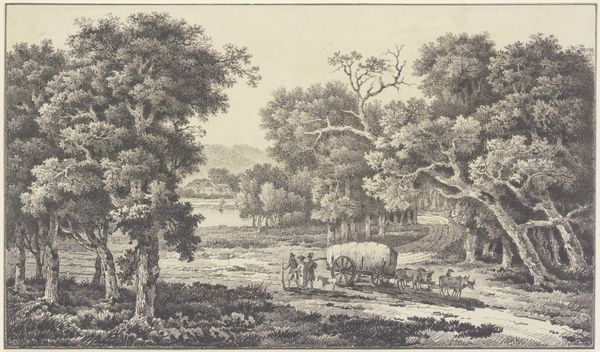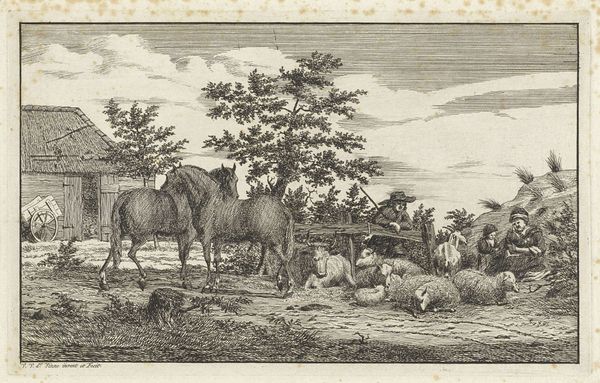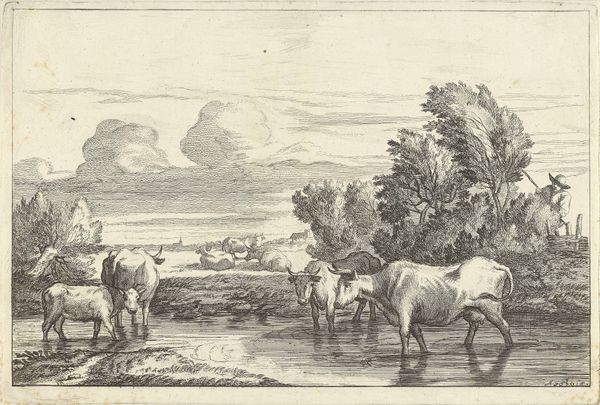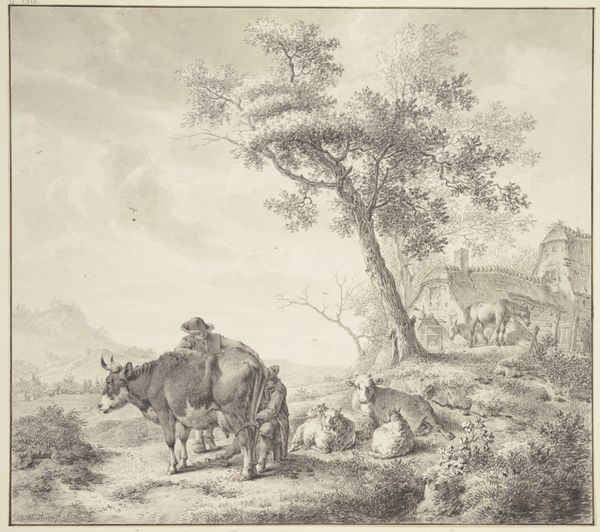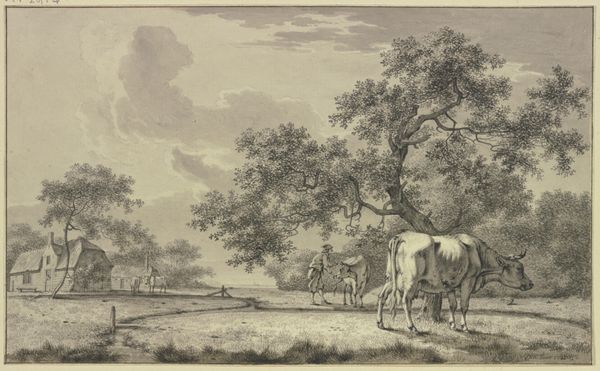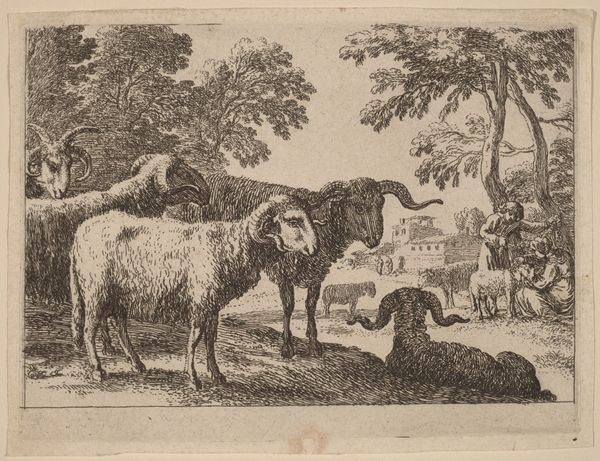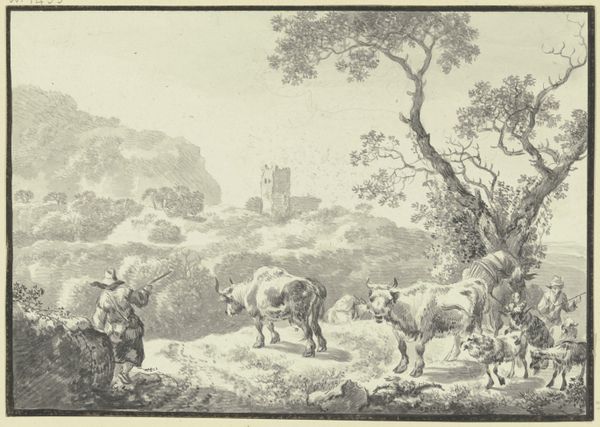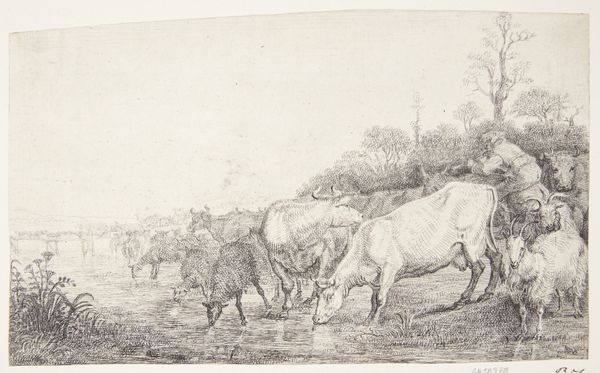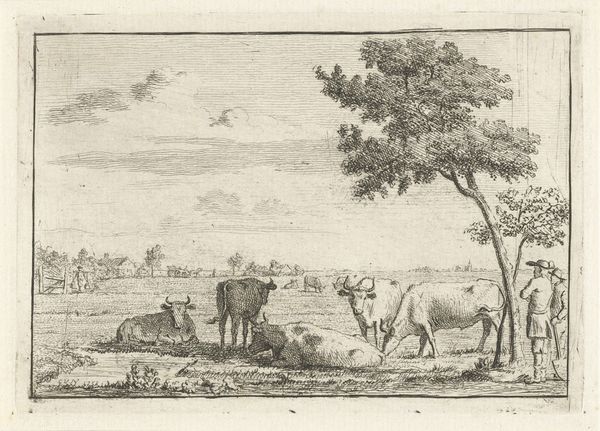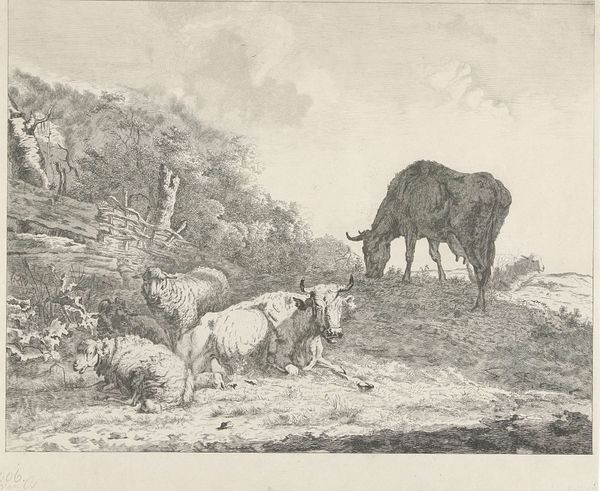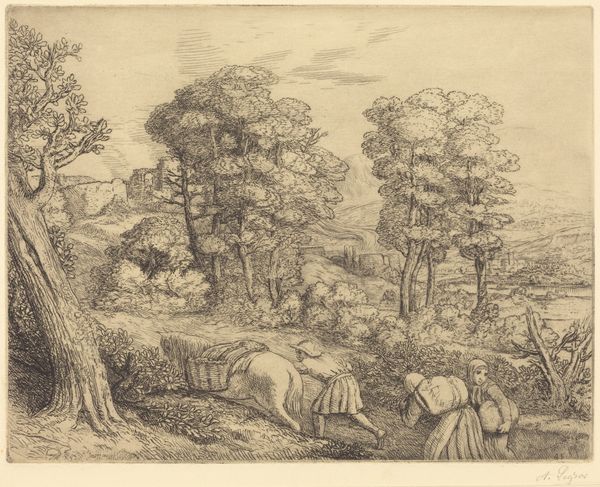
print, engraving
# print
#
landscape
#
line
#
genre-painting
#
engraving
#
realism
Dimensions: 210 mm (height) x 294 mm (width) (bladmaal)
Curator: Welcome. We’re standing before A.P. Madsen's "Landskab med græssende kvæg," which translates to "Landscape with Grazing Cattle," created in 1856. It’s an engraving, offering a glimpse into 19th-century Danish pastoral life. Editor: The composition immediately strikes me as very calm and somewhat… melancholy? The cows seem listless, and the trees, though large, appear a bit burdened, with droopy, full canopies. The entire scene is rendered in such delicate lines, reinforcing the stillness. Curator: Yes, the stillness you mention comes from the precision inherent in the engraving process. Madsen meticulously etched lines into a metal plate; those lines hold the ink and then transfer onto paper. Each mark represents hours of skilled labor. Think about the societal view of agricultural labor and leisure—the pastoral idealized—which of course, glosses over harsh realities. Editor: Absolutely, and this engraving reflects that glossing over. There's a powerful social narrative embedded in representing these animals in this very picturesque setting. I wonder about Madsen’s intention in emphasizing the peace, perhaps offering a vision of stability during a time of social change and industrial growth. Whose land were they on and how did the community feel about them? The absence of humans begs further inquiry, as it reinforces their exclusion from what appears to be "natural." Curator: Consider the economics as well. An engraving like this wasn't for the peasant farmer, but more likely, an object of aesthetic consumption for the rising middle class. It connects to broader questions about land ownership, the commodification of rural imagery, and access to visual representations of "nature". The landscape becomes a symbol, divorced from the actual toil and environmental impact. Editor: It reminds us that even seemingly benign landscapes are loaded with ideology and socio-political messaging. The cows are simultaneously docile agricultural tools as well as elements contributing to an emotional and aesthetically calming image. What we deem beautiful—particularly within a rural context—often conceals complicated issues of labor, class, and environmental implications. Curator: Right, we must look past what may simply strike the viewer as pleasing scenery, and recognize it as a crafted construction, steeped in materials, labor, and social values. I've never really looked at it from your perspective before, I must admit. Editor: Similarly, I never realized the extent to which a single engraving carries such a weight of physical making. It is another reminder of how we, as beings influenced by context and time, are viewing that which has long existed before our eyes.
Comments
No comments
Be the first to comment and join the conversation on the ultimate creative platform.

